Physical Therapy
Physical therapy (PT) is a key component in the healthcare industry that focuses on improving the physical function and mobility of patients while taking care of their pain, avoiding impairment, and promoting general fitness and health.
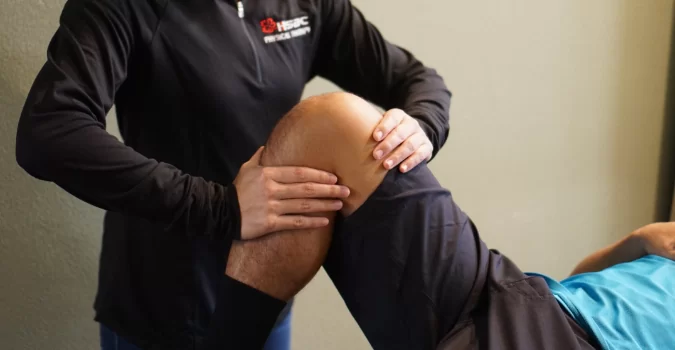
Networking within the physical therapy community is not only an added benefit, but it is actually an integral part of growing professionally and in knowledge. It encourages sharing, insight, and technique development with active practitioners, and support systems. You may open yourself up to opportunities by connecting online, through professional organizations, or at your local meetups. A look into some key ways to connect with other professionals in the practice of physical therapy is presented below.
How do you become a part of a professional organization of physical therapy?
The general process of becoming an active member in good standing with a professional organization, like the APTA, requires one to usually fill out an application online and may have benefits such as continuing education courses, conferences, and even networking opportunities with other professionals.
There are also specialized sections within organizations like the APTA in orthopedics, neurology, and sports therapy, where members can dive deeper into that area of learning and networking. Most membership prices include a different student versus licensed professional rate and affiliate member rate, with many offering scholarships or a reduced rate for early-career professionals.
How does social media help you connect with other physical therapists?
Social media has many different outlets for networking with other therapists. Professional sites, such as LinkedIn and Facebook, have groups where therapists converse with one another about information, challenges, and advice. Twitter is also useful for following what’s new in the industry through industry-related hashtags and accounts.
By being an active participant in discussions, and attending virtual events or webinars, you get to grow your network, engage top thinkers, and find job opportunities. It is also easy to use social media platforms to follow industry organizations and be in the know of future conferences, workshops, and learning materials.

Why should you attend physical therapy conferences?
Physical therapy conferences create unparalleled opportunities for professional development. The activities include attending workshops taken by experts in the industry, lectures regarding the latest research, and hands-on experiences with new technologies.
Physical therapists find it very useful to network through these conferences in order to connect with peers, share knowledge, and make contacts that may lead to future collaboration or even a job opportunity. Many of these conferences also provide continuing education credits for their participants, which further makes them quite helpful means of maintaining licensure while staying on top in the field.
How do online forums or communities assist physical therapists?
Online forums and communities example, physical therapy threads on Reddit or sites like PhysioForum-help therapists share knowledge of working out the puzzling cases and getting advice from their peers in any part of the world. Such forums would become very useful in cases where practitioners work in small practices and may not have peers around them with whom they can consult.
They also provide the opportunity to discuss topics of continuing education and share evidence-based practices, and current research in the field. This will help your practice by exposing you to the variety of perspectives and experiences mentioned previously.

How does mentorship positively affect your growth as a physical therapist?
Mentorship guides supports, and advises physical therapists throughout their careers. Finding a mentor may be the most significant career step for a physical therapist. A mentor will help you identify your career goals, sort out complex cases, and further develop your clinical skills.
Many professional associations provide formal programs with mentors, but you can also locate mentors less formally by reaching out to co-workers or instructors in your field who have rich experiences. Mentorship promotes ongoing learning and provides emotional support that is especially vital during the early years of your career when you gain confidence and build expertise.
How local meetups can improve your physical therapy practice?
In fact, local meetups or networking events are great ways for physical therapists to meet and greet with other professionals in their locality. These can be as informal as getting together for coffee or as structured as continuing education workshops.
They also provide a chance to share ideas, and concerns about local healthcare trends, and even collaborate on projects, such as health fairs or community outreach programs. Local events allow practitioners to feel a part of the community for emotional support, referrals are possible, and participation at these events will build your local reputation and extend your professional network.
In Conclusion
Connection with other professionals in the field will be important for continued growth and success in physical therapy. A good network allows for collaboration and learning through organizations, conferences, or online forums. These networking opportunities allow physical therapist to stay updated with industry trends, work out their skills, and develop meaningful relationships that will enable them to continue with their own personal and professional empowerment. First, research the best networking channels for your career aspirations.
Physical Therapy
Physical therapy (PT) is a key component in the healthcare industry that focuses on improving the physical function and mobility of patients while taking care of their pain, avoiding impairment, and promoting general fitness and health.

Being a physical therapy practitioner is a rewarding, in its own proportion, career path that is achievable through commitment and education coupled with the desire to assist others. While practicing, physical therapists will assist patients in improving their activities, controlling pain-related conditions, and recovering from physical trauma. Let’s explore and see what the first steps toward becoming a physical therapy practitioner are.
What educational qualifications are required for the physical therapy profession?
The first step to becoming a physical therapist is getting an undergraduate degree and then the student has to undertake a postgraduate qualification in DPT. This must be accredited positively by CAPTE (Commission on Accreditation in Physical Therapy Education). The graduate course DPT normally is made up of class work and clinical practicum comprising courses on anatomy and physiology along with biomechanics labs.
Note that for licensure, you have to undertake the NPTE in order to complete your studies. Though few can be noted, the students will find each state has different requirements for added qualifications or licenses hence one needs to conduct diligent research prior to going.
How Much Time Does One Requires to Be a Physical Therapist?
It requires seven years to become a licensed physical therapist. This is inclusive of the four years for a bachelor’s degree followed by a three years program for a Doctor of Physical Therapy (DPT).
Some students may extend their undergraduate degree completion time or may engage in further clinical training or resident programs after completing their DPT. The moment the curriculum part is over, a would-be therapist must follow the NPTE and may also need to follow any other state requirements to gain their license.

What Skills Does It Take to Be a Successful Physical Therapist?
Some of the key skills necessary for a physical therapist include interpersonal communication skills, problem-solving, emotional stability, and physical strength among others. Other requirements include knowledge of human anatomy, skills concerning manual therapies, and formulating and conducting individualized rehabilitation programs for various age and disease categories.
In this respect, it is significant with regard to the treatment of patients and the coordination between the patients and some other doctors. In this line of work, it is possible to come across clients in pain or with limited range of motion; therefore, compassion and patience become essential.
The other side of the job, problem solving, will allow adjusting the strategies to treat the individual needs of particular patients. Part of your job will also involve physical loads as physical therapists spend most of the working day on their feet with patients and moving about to provide rehabilitation to patients.
What Are the Options for Continuing Education for Physical Therapists?
Physical therapists have to perform incessant learning to continue working in a given state. In this regard, continuing education is often mandated as a certain percentage of states such as Michigan have defined minimum continuing education units required for physical therapists to engage in practice as a routine practice such as every two years or December of each year.
For instance: Some therapists may take up additional board certification in cardiopulmonary, orthopedic, or geriatric therapies. Seminars, webinars and professional events also give abundant information as well as information about modern advancements in the physical therapy world.
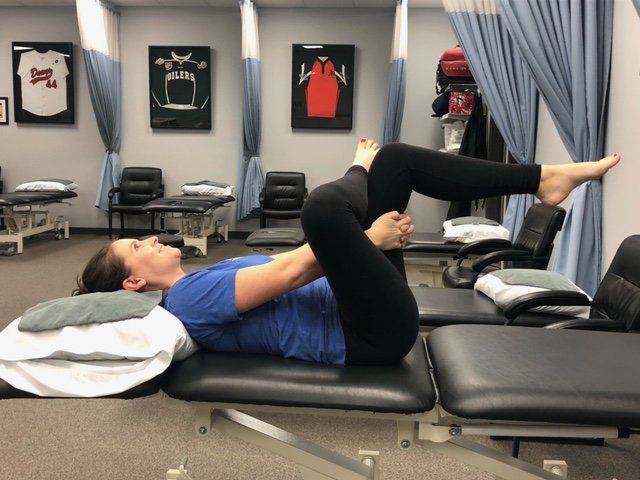
What are the Job Opportunities for Physical Therapy Graduates?
PT graduates can find jobs in hospitals, clinics, rehab, or sports centers. Areas of practice also include, pediatrics, orthopedics, neurology, and others. A significant number will also engage in academic activities such as research, teaching, or management in the healthcare industry.
Moreover, they can further authorize themselves and reach higher positions such as healthcare management or administration or change the scope of direction and become teachers in educational institutions. Research practitioners also have a chance to engage in aspects where they look at new ways of coming up with rehabilitation methods or technologies that positively impact the field.
What Is the Salary Range for a Physical Therapist?
Physical therapist salary range varies but on average sits anywhere from $70,000 up to $100,000 a year based on location, experience, and specialty. There will always be variations in the remunerations due to such factors as demographics, working experience, and the work environment of the therapist in question.
For instance, metropolitan physical therapists make more pay than in rural areas. Furthermore, some earn a premium by practicing in orthopedic, neurology, and sports therapy fields where their skills are in high demand.
Wrapping Up!
Working in physical therapy is a satisfying profession that requires both education and creating of skills as well as compassion. In addition, physical therapy has a chance to explore deeper and more in the profession. Rehabilitation, sports medicine, and pediatrics are some of the specialties in which you will be trained and these will help you to change the lives of patients positively. Explore the details of educational programs as well as licensing requirements in order to begin.
Physical Therapy
Physical therapy (PT) is a key component in the healthcare industry that focuses on improving the physical function and mobility of patients while taking care of their pain, avoiding impairment, and promoting general fitness and health.
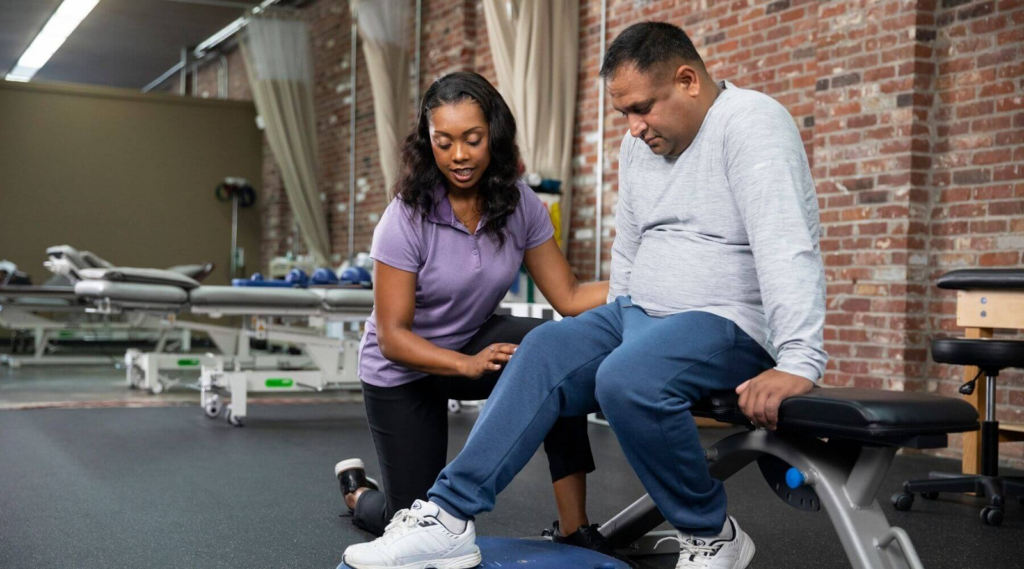
Physical therapy is a worthwhile healthcare option, especially during recovery, however, it is sensible to know the investment required. Such things as insurance coverage, frequency of the session, and locality will dictate the general cost. This guide addresses most of the questions pertaining to the financial burden attached to practicing physical therapy and encourages you to budget accordingly. Anticipation of the costs to be incurred in advance helps you to make informed decisions that ensure quality care whilst containing costs.
What is the average cost per session of physical therapy?
As with any other profession, the expenses incurred for each session will depend on several factors. Physical therapy sessions cost anywhere from $50 to $350, depending on the place, the kind of treatment as well the therapist. Insurance coverage diminishes the direct costs to the patients enabling them more plates.
Physical therapy is one of several potential expenses following an injury, but its price is highly dependent on aspects such as location, the type of treatment you require, or the Therapist’s experience. In metropolitan areas, you can generally expect to pay between $100 and $350 for a session while in smaller cities it would be closer to $50.
Do however notice that if you have insurance then most likely a portion of the costs would be borne by them but only up to a certain limit and other out-of-pocket expenses like copays and deductibles will hold. It is advisable to ask your insurer what exactly is covered in your plan and the extent of your expenses. Discounts or payment plans may be available should you decide to pay from your own funds.
Does insurance cover physical therapy costs?
Such initial procedures usually aren’t that costly hence patients don’t have to worry much. Most health insurance plans offer physical therapy coverage whether on a full basis or partial for therapy patients who would incur further charges as a co-pay.
It is likely that policies and variations in therapy will affect the coverage and the elements of out-of-pocket payments. Many patients are benefited by a particular program which is offered at a subsidized rate by the insurance covering a part of the cost patients pay a certain amount toward paying a copay or a proportionate amount towards the cost of each session.
Other policies may put a cap on the number of visits in a year or simply ask you to see your doctor to get clearance first before therapy is undertaken. It is essential to check with the insurance provider if the therapy you need is covered and how much you would need to contribute. Knowing these details in advance would help manage expectations with regard to finances.

What are the parameters impacting the cost of physical therapy?
There are many factors that need to be considered such as the location, therapist type of treatment, duration of treatment, if any insurance is being paid. The casting facts do define in general terms the price of therapy sessions.
The cost of physical therapy is determined by several factors. Location is a major one, as therapy tends to be more expensive in large cities than in rural areas. The experience level of the therapist also affects pricing, with specialists or more qualified professionals charging higher.
Other things that affect cost are the kind of therapy done whether it is manual therapy, or aquatic therapy among others as well as the duration of each session. Insurance can greatly limit out-of-pocket costs. However, copays and session limits may still be a concern. For relative costs, ask those when booking the therapy.
Can you save on costs for this service?
In network providers, payment’ checks for schemes and coverage try and search for the loss. Doing so may also save you money since you will only come to the hospital for a few visits instead of regular essays.
There are several ways to decrease the economic burden of physical therapy treatment. One of these ways is to obtain physical therapy treatment from a physical therapist who is within the patient’s insurance coverage, as this norm will often lessen the out-of-pocket expense incurred.
Low-cost and free resources such as fast stretching exercises using videos from the internet can assist. Always check with your physiotherapist before changing yourself to any therapeutic exercises in order to avoid worsening the condition and wasting your own and your physical therapist’s efforts.
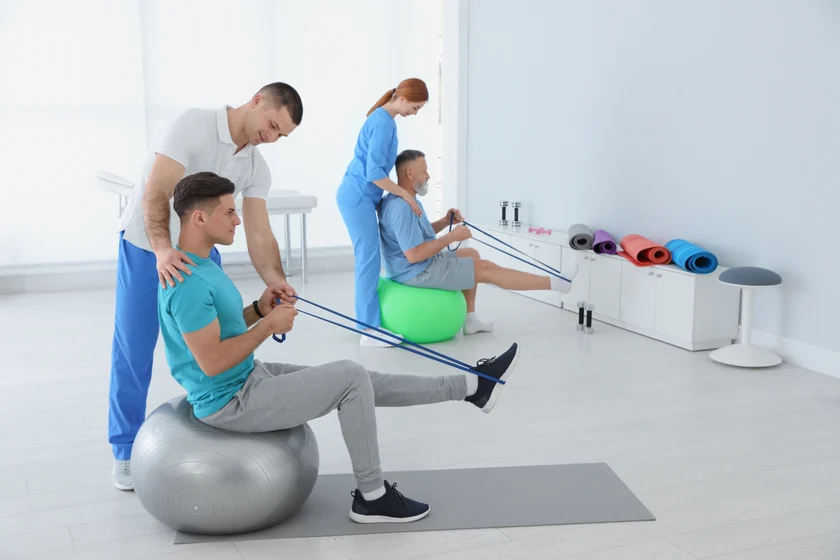
Is physical therapy worth the cost?
In most cases, doing physical therapy is worth it. It helps postpone or avoid the need to have surgical procedures or use costly medicines. It aids healing, independence, and health. It is thus a cost-effective treatment alternative to many conditions.
As everyone learns at the onset of their courses, physical therapy is an understatement and is actually a form of self-preservation for the individual as it avoids expenses in other areas such as expensive surgeries or invasive therapies. It also facilitates faster healing from injuries, enhances the range of motion, and helps build muscle to avert future problems.
Although the short-term therapy benefits seem expensive, many patients and individuals will not develop the need for such medications in the long run, have fewer medical consultations, and in the long run be less healthy. Many patients believe that since physical therapy restores function and enhances the quality of life, it is quite inexpensive for maintenance of injuries or chronic illness.
Are there hidden costs in physical therapy?
Other costs in physical therapy include equipment hire, extra consultations, or extra sessions of therapy for many patients. To avoid unexpected costs, it is good to discuss numerous general treatment limits with your therapist and also the insurance company.
Most of the physical therapy costs are paid right at the beginning, however, there are some other expenses that may be incurred later during your treatment sessions. Some clinics, for instance, bill additional fees for chiropractic apparatus such as brackets or therapeutic bands, and for prolonged individual therapies.
Other add-on expenses could encompass return consultations with specialized doctors or changing the course of the therapy. Exceeding the number of covered client sessions in your insurance plan is also a cause for extra expenses. To get rid of such surprises, consult your therapist on any additional payments in advance, and double-check with your insurance company about payment ceilings before therapy.
Conclusion:
The amount of money that one invests in physical therapy will not be similar in all cases. However, finding out about the costs beforehand can indeed help you in this regard. From factors like how much of it is covered by insurance, payment plans and the health benefits realized from the therapy, the therapy is most times a good money-related venture. Many of the people who require physical therapy will find it effective and affordable.
Physical Therapy
Physical therapy (PT) is a key component in the healthcare industry that focuses on improving the physical function and mobility of patients while taking care of their pain, avoiding impairment, and promoting general fitness and health.

Engaging in physical therapy at home provides a useful way of continuity of rehabilitation between appointments with a physical therapist. However, careful design of the space in which exercises will be done is important in ensuring adequate performance of the exercises and also avoiding injury. First, this manual addresses the most frequently asked questions on how to do physical therapy at home with little risk involved. You can restore your motion and recover faster without the need for constant personal therapy sessions if recommendations are followed.
How can I create a safe space for physical therapy at home?
Home physical therapy safety measures include removing all obstacles, non-slip surfaces, etc, ample illumination, sufficiency and positioning of required materials, etc. Exercise resources should always be within reach to avoid injuries while attempting to practice the exercises.
There should be no unnecessary items in the therapy area and enough space for any activity. Also, a nonslip mat is very important, especially for standing or balancing exercises. Proper light prevents injuries as the individual can tell the direction of movement and the presence of the surrounding obstacles.
Also if there is the required means of therapy – like resistant bands, light dumbells or chairs – around one need not overreach. This empowering possibility of working out in such an arrangement where the risk of falling over or exerting self can be completely reduced.
What are the benefits of doing physical therapy at home?
Finally, practicing physical therapy from home has added flexibility as far as location and time is concerned, and, interest, progress of therapy from the perspective of rehabilitation remains uninterrupted. Patients can exercise regularly at a convenient time without having to make several trips to the therapy centers.
Practicing physical therapy from home helps you perform the required movements that fit neatly into your daily plans and do not require lodging and travel to the clinic each time. This helps in the adherence rate among patients hence better results in the long run. What is more, it also removes travel time since home therapy is recommended for busy people or those with mobility difficulties.
The other perspective enhances the compliance rate towards the recommended exercises especially when done within a flexible schedule directed by the therapist. Nevertheless, a therapist must check up on patients often to check progress.
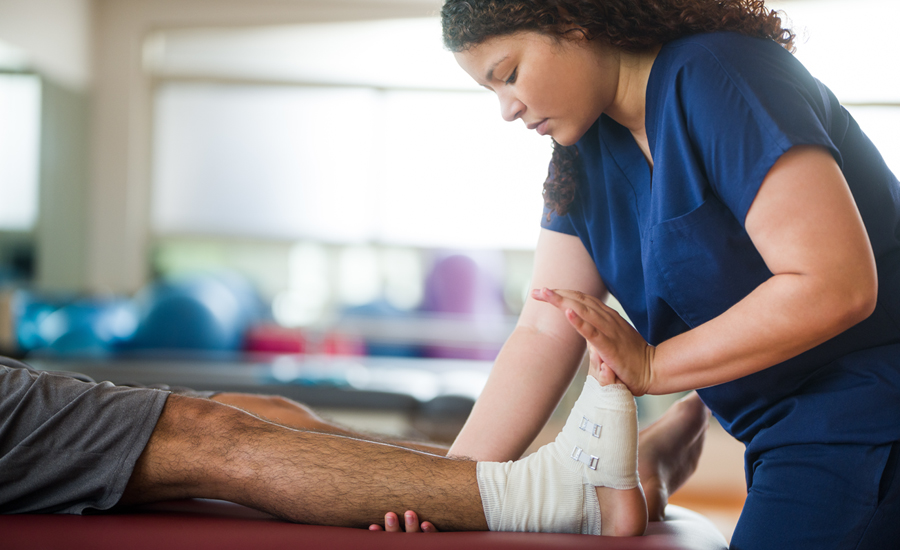
What equipment do I need for home physical therapy?
Whereas for virtually all home physical therapy engaging in such tools and devices as resistance bands, light weights, and yoga mats may not have been first understood these basic with none providing thorough regards for the optimal structure of each deficient unit. Your physical therapist may suggest some additional tools such as general exercise balls or foam rollers while treating you.
The kind of equipment that will be incorporated in-home physical therapy will depend on one’s condition, as well as the goals sought through treatment. Resistance bands are multifunctional and enable strength and flexibility training as well. Light weights or dumbbells are effective in strength training and exercising, while yoga mats are used for interests and floor workouts.
Chairs or stable surfaces are used for stability when performing standing exercises. Based on your therapy regimen, foam rollers might be included as a recovery aid, whilst therapy balls might enhance balance and core stability. Do consult your therapist before buying any equipment.
How frequently should physical therapy exercises at home be performed?
The number of times home physical therapy exercises can be carried out will depend on the condition and recommendations of the therapist. Ideally, such exercises are norm performed at least 3 to 5 days weekly, such that improvement is constant.
Your therapist is likely to prepare an individualized exercise schedule which will specify how many times you will be expected to do each activity. As a rule of thumb, patients practicing their physical therapy regimes 3 to 5 times a week will achieve conducive progress without undue stress to their muscles and joints.

Am I permitted to do home physical therapy without supervision?
Yes, many people prefer to do the physical therapy exercises at home without supervision, provided they have been told how to do it by a therapist. And of course, listen to your therapist and do it right to avoid injuries.
While a person can voluntarily practice physical therapy exercises at home, he or she should have obtained detailed guidance from the therapist in advance. This is done to avoid doing too much or doing too little, which in turn creates room for safe actions. Such instructions should be followed so as to not aggravate the existing damage or create another one.
Occasional remote visits using communication technology to check on how events are proceeding and whether or not the exercises need to be revised are recommended. In case of any other pain, one should ask the therapist for other opinions.
Are there home physical therapy safety measures to observe?
Exercise properly, gradually increase the intensity of exercises, and if there is any pain, stop. Make the exercise area safe by preventing falling or tripping, displacing equipment while moving around, and staying in touch with the therapist.
In-home physiotherapy, it is important to start with the lowest range of exercises and only increase the range gradually. A good technique is important to avoid injuries so make sure to follow the physical therapist’s guidelines on how body positioning and movement are done. Make sure the area you exercise in does not have any obstructions preventing you from falling or slipping and use a textured surface that is safe.
What are the potential pitfalls involved in performing physical therapy at home?
Among Home Physical Therapy risks are wrong doing exercises, shoulders overworking, and clients working in an unsupervised manner. Similarly, if you like to minimize the risks, abiding to your therapist’s instructions is advised.
While doing physiotherapy at home, it is important to understand that there are some risks if the exercises are done poorly and there are some poor home physical therapy guidelines. Such as the risk of too much improper execution that leads to muscle strains, joint injuries, and/or aggravation of existing conditions.
Also, there is the risk of doing too much and overtraining which is a lack of time so good exercise and recovery won’t be achieved or it could even bring on fresh problems altogether. The avoidance of such risks could include complying with your therapist’s directives.
Conclusion:
Home exercise therapy will be most effective when applicable and properly guided. Having a secure setting and adherence to the physical therapist’s recommendations, further progress in rehabilitation can be made independently. Further follow-up management by your therapist and emphasis on technique, equipment use, and fitness regimen are important for injury risk minimization. If all necessary structure is in place, home exercises can integrate well with clinical ones improving therapy in the long term.
Physical Therapy
Physical therapy (PT) is a key component in the healthcare industry that focuses on improving the physical function and mobility of patients while taking care of their pain, avoiding impairment, and promoting general fitness and health.

The introduction emphasizes physical therapy as an integral part of recovery and rehabilitation; however, just like any form of medical treatment, there are certain risks associated with its practice. Awareness of these risks as well as the needed precautions make it possible to make informed decisions.
Precisely investigating these risks in advance allows the patients to be better mentally prepared for the process of undergoing physical therapy. In this guide, we address such issues that people commonly raise when it comes to physical therapy and narrow these challenges down to medically safe and practical solutions for the purpose of achieving recovery.
What are the most common risks associated with physical therapy?
The common risks of physical therapy assessment and intervention include muscle soreness; and resolution fatigue in the form of minor injuries such as strains. When undertaking physical therapy it is possible that some of the risks may be short-lived.
These can occur especially when exercises performed have been taken a little bit too far or when they are done in an incorrect manner that they lead to injuries. Such occurrences can be minimized with appropriate treatment from a therapist.
The discomforts and tiredness are not the only things that the patients will go through, due to the nature of this procedure the patient will possibly have bruising or some soreness in the affected area mainly when this involves
Is it possible to sustain an injury while under physical therapy treatment?
In case there is a need to conduct a physical therapy treatment, the necessary precautions to avoid any injury should be taken. Seek your physical therapist’s instructions, don’t ignore pain and ensure good technique for every exercise done.
However, except for following your therapist’s instructions, you should also remember to do some warm up exercises to prepare for the body’s muscles before attending the sessions. There is also the importance of cooling down to prevent injury. More importantly, good equipment and body posture should be emphasized and these will help reduce pressure on the body.
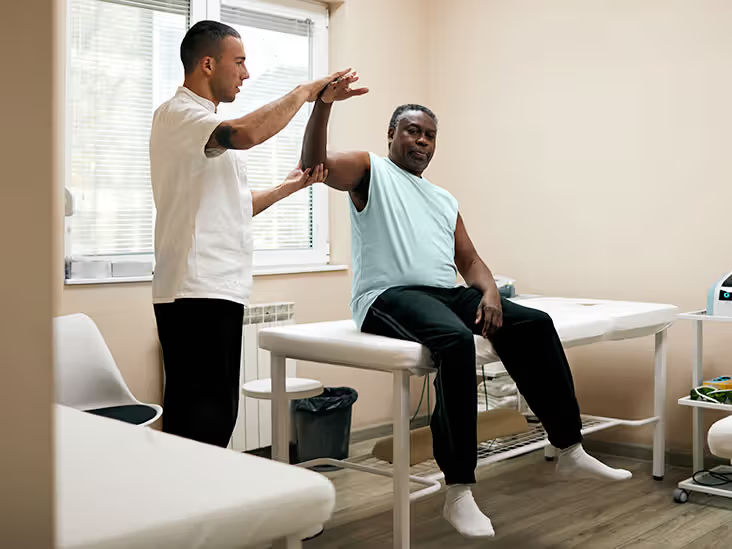
Is there a possibility of physical therapy making things worse?
There is a rare instance where too much physical therapy can actually worsen a condition where limitations on certain exercises could have been more beneficial. There is no such thing as too careful even when a reputed therapist is treating the patient.
Despite the rarity of injuries resulting from physical therapy, physical therapists should note that certain patients may be unresponsive to interventions in the given rehabilitation-exercise program and so it may worsen their physical status. Complications such as arthritic joints or postoperative pains must not be abused.
For the most part, however, something for overdoing will not be necessary, and therefore therapists make sure that there is very little progress that can lead to excessive working out. Any disputes regarding any pain or injury while undergoing therapies are highly discouraged. Such verifications would ensure that there were no hazards to thera
Are there any long-term side-effects of physical therapies?
Chronic side effects of physical therapies are rare but foreign body sensation in any much-worked area is quite common. Most of these effects come but have not been easy to handle, however making sure the right methods are used reduces these effects.
Occasionally, a patient may notice some soreness or tightness if the treatment is not appropriate to the person’s needs, or if the person is rather vigorous during the recovery period. This happens most often when the patient does too much with regard to the rehabilitation exercises, especially in the case of chronic injuries.
What measures do therapists take to reduce the risks in physical therapy?
In minimizing risks, therapists evaluate the health status of every patient, suggest such actions as exercises appropriate for the individual patient, and provide instructions regarding form and technique. Control and feedback system ensure the safety of the patient and modify the program for making progress.
Therapists assess the medical history of the patient, present condition and how physical activities may be performed by the patient. It enables them to come up with a more specific plan that will suit the ability and the wants of the patient.

What stipulations should older adults be given when tasked to undergo rehabilitation?
Older adults should be sure to obtain the advice of their physician especially before starting any form of physical therapy and also make sure the therapist is aware of their general state of health. Physical therapy exercises should be low and gradually increased. It is also essential to include training for balance and flexibility and repetitive strength training to minimize the possibility of injury.
There are several guidelines that should be observed in relation to the elderly people. There exist low impact, balance strengthening and flexibility promotions for the elderly people. Waivers and gradual increases in tunt-wants assist people avoid over exertion, which fosters falls or pulls. Patients with pre-lock disorders like osteoporosis and arthritis require special focus while constructing workout regimes.
What should I do if I feel any pain during the physical therapy?
In case a person feels pain during the course of physical therapy, they should immediately stop exercising and let their therapist know about it. Therapists will check what causes the discomfort and modify the plan to avoid such problems.
Pain during rehabilitation indicates that a certain exercise might be too vigorous or that it is being carried out ineffectively. As a rule, such reactions must be reported for fear of making things worse. In such cases, your therapist will either change the exercise or will facilitate it in such a way that your body heals effectively without overdoing it. Some soreness is of course fine, however, extreme or excruciating pain is a warning.
Conclusion:
There are many advantages of using physical therapy; however knowing its risks and measures is important. Here again, it is important to avoid injuries and cope with pain under the supervision of a professional. Risk management includes open dialogue, constant vigilance, and stepwise advancement. In this way, patients as well as upper extremity and shoulder ortho boxes rehabilitation will facilitate return to their normal activities auto progressively improving health, pain levels and functional levels over time.
Physical Therapy
Physical therapy (PT) is a key component in the healthcare industry that focuses on improving the physical function and mobility of patients while taking care of their pain, avoiding impairment, and promoting general fitness and health.

Physical therapy is beneficial when it comes to recovery and pain relief, however, how effective are the sessions you undergo, are they worth it? Whether you are enduring an injury, recovering from surgery, or treating chronic pain, physical therapy calls for participation by the patient if the desired objectives are to be obtained. So let’s move on to some useful tips that will allow you to make the most of physical therapy and speed up the healing process.
How can I improve the effectiveness of physical therapy sessions?
The effectiveness of physical therapy is improved depending on adherence to appointments, effective communication, and compliance with prescribed directives by the therapist. The follow-up for attending clinics for therapy, doing the prescribed exercises, and getting feedback from patients are very important. Fluid intake and sleep have great importance in healing, however, follow-through and focus can affect the results well into the future.
Let us break this down. This as well is critical as a series of exercises are better performed when all units are done in order from the first one skipping the last. If a person does not go for treatments for a period of time that is rather tiring, that person can actually end up taking a little more time to heal than that which was initially forehead.
It is equally important to do all the exercises that your therapist prescribes at home since that ensures all the strengthening and mobilization of the muscles continues away from the clinic. This is crucial as people are different and coping with the pain or improving either in every session may not be the same.
What should I avoid to get the best results from physical therapy?
For the best outcomes of physical therapy, some of the things to avoid include: skipping sessions, neglecting home exercises, and doing too much when in pain. These behaviors are detrimental to the rate of progress and may even make your condition worse. Thinking that taking too much work is an easy way to get better sooner can increase the risk of getting an injury, whilst bad habits such as sleeping poorly or eating poorly can cause one’s recovery to take longer than normal.
The effectiveness of the therapy largely depends on how well you stick to your treatment both at the clinic and at home. Even when you have started feeling okay, keeping up with your exercises helps prevent plateaus. For instance, they may recommend against certain activities such as heavy lifting or intense workouts until your therapist advises you to do so. Realize that healing is a process that takes time and self-control so that undue pressure is not applied which might complicate the situation.
How does setting realistic goals help in physical therapy?
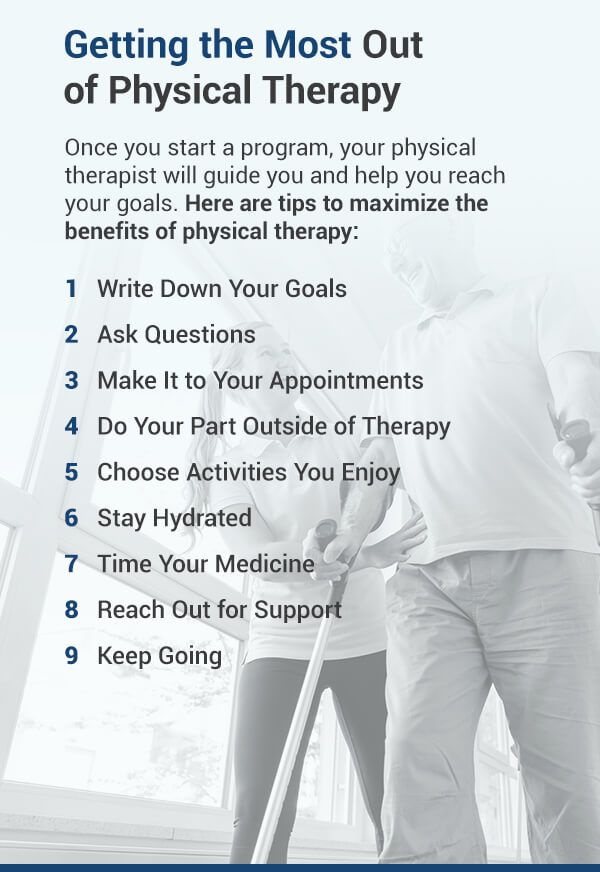
Setting realistic goals in physical therapy helps in ensuring motivation and progress is evaluated and tracked appropriately. It helps to manage the level of disappointment that may occur when most particularly the recovery is too slow through realistic measurability. Such regular feedback sessions prevent you from going off course and enable you to update goals if required. Encouraging factors and strategies help to break monotony and motivation in the process.
Losing heart over slow progress is not unusual in physical therapy. The focus, if broken into smaller, quantifiable parts like acquiring a new range of motion or lowering pain levels in certain exercises, is easier to manage. These small targets are necessary so that progress towards a certain goal can be measured and therefore maintained. It is your therapist who helps you determine these objectives, and review them as you continue working towards your goals.
How can proper technique enhance physical therapy outcomes?
Appropriate biomechanics help to avoid injuries and also help to derive more from every activity performed. Bad posture can lead not only to exacerbation of already existing problems but can also cause new, as yet undiscovered, problems. Your therapist places greater emphasis on ensuring that your actions fall within the proper zones and conditions to enable the changes that you want to happen. Keeping to the correct posture when doing exercises at home ensures long term benefits.
The most significant body part which is put into a higher risk in physical therapy is the patient’s risk to navigate through the exercises wrongly and add pressure to the already overstressed body parts and muscles. This is why you will often need to rely on your therapists who will ensure that your body achieves the needed aims without any of its parts moving inappropriately. Doing the right thing enables the muscles to be exercised and healed in a safe manner. People performing these techniques regularly will have results which stay for a longer time.
What role does communication play in physical therapy success?
When doing your rehabilitation, effective communication with your therapist helps in coming up with a reactionary treatment plan. For instance, one can let the therapist know about their pain level, how they are progressing in therapy and any challenges which have arisen. Dialog in this fashion helps to avoid injuries and keeps the treatment on your specific goals and objectives.
Adequate exchange of information creates tremendous friendship between you and your therapist. If you remain silent about your pain or other difficulties, your therapist will carry on with a course of action, which is partly faulty. In the same manner, If there are some particular commander stance exercises and their particular variants that are executing well a patient should say this. The best and most efficient treatment is the one that changes depending on the results that a person has as a result of that treatment and this change is achieved through effective communication.
How important are home exercises for physical therapy results?
Exercises at home help to reinforce the therapies received during the therapy sessions. Such exercises also help in muscle strength, flexibility and hasten the healing process. Doing such practice prevents the body from losing the improvement which was made during the course of therapy however failure to do such practices may lengthen recovery or cause recovery hick-ups.
Home exercises are prescribed for a reason. They add to the efforts that one has expended in the course of therapy by toning the muscles and improving range of motion. Doing these exercises in the wrong manner, or not performing them at all, can delay your improvement. The more consistent you are in doing your home exercise program, the more quickly you will achieve the results and the less treatment you are likely to be prescribed.
What lifestyle changes support physical therapy recovery?

Maintaining a healthy lifestyle is essential for enhancing your therapy results. Proper nutrition, fluid intake, and sleep help in the recovery of muscles and tissues. Controlling one’s stress level, giving up smoking as well as moderating alcohol consumption fosters body repair and movement promotes muscle strength and flexibility.
Your body gets the best from rest when it has the right food. Taking balanced nutrition that includes nutrients, water intake and sleep are some basic things that would improve your recovery. Also, this kind of tension is not good for a body that is attempting to heal and can be avoided by the stress management techniques of meditating or deep breathing. Making these small but important changes can help you to obtain the maximum benefit from your physical therapy program.
Conclusion
For physical therapy to be effective, the patient engagement cannot be limited to mere attendance at the therapy sessions. It is more of adhering to a rigid schedule, relating efficiently with a therapist, and conducting the needed activities alone. By heeding a professional’s counsel and changing some of one’s routines, recovery could be accelerated. It is important to understand that physical therapy comprises a joint effort involving both the patient and the physician, where determination and interaction are vital.
Physical Therapy
Physical therapy (PT) is a key component in the healthcare industry that focuses on improving the physical function and mobility of patients while taking care of their pain, avoiding impairment, and promoting general fitness and health.

Collaboration among conventional treatment, alternative modes of treatment, and physical therapy can effectively address various aspects of healing. This gives room for utilizing multiple techniques that not only promote wellness but psychological well-being as well in patients.
Looking at how these therapies could work together offers other health benefits to individuals who are likely to recover faster. This resource provides answers to the core questions to enable you to understand the relationship between physical rehabilitation and other forms of health treatment:
What are the interactions between physical therapy and chiropractic therapy?
There is an interaction between physical therapy and chiropractic therapy. Chiropractic therapy is used in the adjustment of the joints mainly the spinal region to relieve nerve compression and enable movement. Physical therapy is complementary and intended to restore muscular strength, body tissue, and restriction of movement or any other limitation.
When used concurrently, they tackle massive problems: back pain, musculoskeletal problems, and injuries. Through combining such therapy, over a period of time, one’s health is restored to normal and in most cases without pain. I also suggest a placement chart between chiropractic care and physical therapy outcomes to highlight the issue of integration.
How does acupuncture complement physical therapy?
Acupuncture also complements physical therapy by stimulating the body to respond to pain and relaxation. The healing process could possibly accelerate when combined with physical therapy, which tries to provide restoration of strength, mobility, and function, targeting pain, while striving for general wellness.
Many patients find acupuncture as a relief because it allows them to relax muscle tension and reduce pain; hence, physical therapy exercises are easier and more effective. Such integration of both therapies gives a balanced approach to the treatment of recovery, whereby both physical and mental approaches are covered. A table of specific conditions treated by acupuncture and physical therapy could be useful for better comprehension.

Is it possible to combine physiotherapy with massage therapy?
Yes, physical and massage therapy go hand in hand. While massage therapy releases tension and increases blood flow, physical therapy strengthens the muscles and increases the range of motion. Conjointly, the utilization of both therapies will enhance recovery, especially for those patients with chronic pain or those undergoing post-operative and injury rehabilitation.
Massage therapy promotes relaxation, thus making exercises in physical therapy more effective with less pain. A flowchart on how massage and physical therapy coordinate might be helpful for the patient.
How does physical therapy supplement orthodox medicine?
Conventional medicine is important in the diagnosis and management of disorders through medication, surgery, or any other intervention technique. Physical therapy after this is highly essential to help patients recover strength and mobility with functionality.
For instance, physical therapy after joint replacement surgeries helps one regain the movement for a successful recovery. Put together, these two therapies create an integrated approach: one to deal with the current issue at hand with conventional medicine, while the other, physical therapy, works towards long-term recovery and prevention of future problems.
Perhaps a comparison table can be drawn showing the roles of conventional treatments versus physical therapy for different stages of care.
Can physical therapy be combined with yoga in rehabilitation?
Yes, definitely, yoga combines with physical therapy for rehabilitation. While physical therapy often consists of structured exercises to rehabilitate specific injuries or conditions, yoga helps maintain balance, build strength, and reduce stress.
This can improve the effectiveness of the healing process and simultaneously be in favor of physical and mental long-term wellness. A tailored yoga workout, as recommended by your physical therapist, can ensure that the movements are safe for your rehabilitation journey. A comparison of physical therapy exercises and yoga poses for similar goals might be enlightening in the form of a chart.
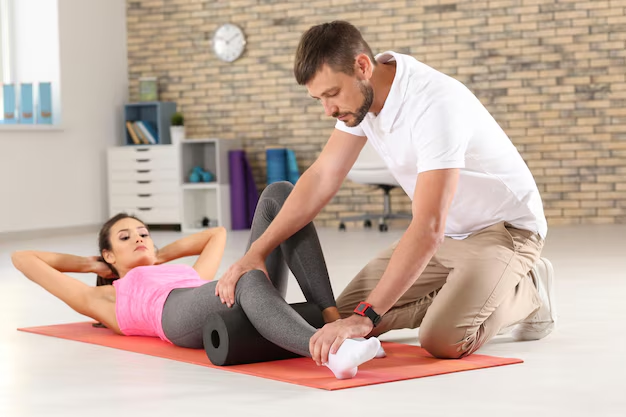
Will it be safe to combine physical therapy with medication?
Yes, physical therapy is often combined with other medications, such as pain relievers or anti-inflammatories. Medication assists in easing acute symptoms, for example, pain or inflammation the patient can go through exercises in physical therapy with more comfort.
Over time, as the body is strengthened and function improved through physical therapy, dependence upon medications may lessen. These combinations offer a balanced approach to address both immediate discomforts while still focusing on long-term recovery goals. A bar graph showing the reduction in medication as the physical therapy progresses should provide a clear picture visually.
How does physical therapy supplement the osteopathic treatment?
This modality works in tandem with osteopathic treatment and is complementary to musculoskeletal function. As most of the techniques of osteopathic practice involve manual manipulation, physical therapy provides muscle strength and mobility for an overall state of well-being.
They combine to make a good general treatment method, both from skeletal structure and muscular systems perspectives. This integration works to the great benefit of a patient who has chronic pain, joint problems, or difficulties with mobility. A technique comparison chart used in osteopathy versus physical therapy could give a better view of their complementary role.
Wrapping Up!
Integrating physical therapy with both conventional and complementary therapies into one approach allows for the practice to be more holistic in nature regarding recovery and wellness. Techniques such as acupuncture, chiropractic services, and massage integrated within physical therapy can increase the process of healing and functionality for a patient. Whether it is to manage pain or recover from an injury, this type of approach to health covers multiple facets of health for better outcomes. This is always best done under the consultations of professionals so that the correct combination of treatments is safely and effectively matched for specific needs.
Physical Therapy
Physical therapy (PT) is a key component in the healthcare industry that focuses on improving the physical function and mobility of patients while taking care of their pain, avoiding impairment, and promoting general fitness and health.
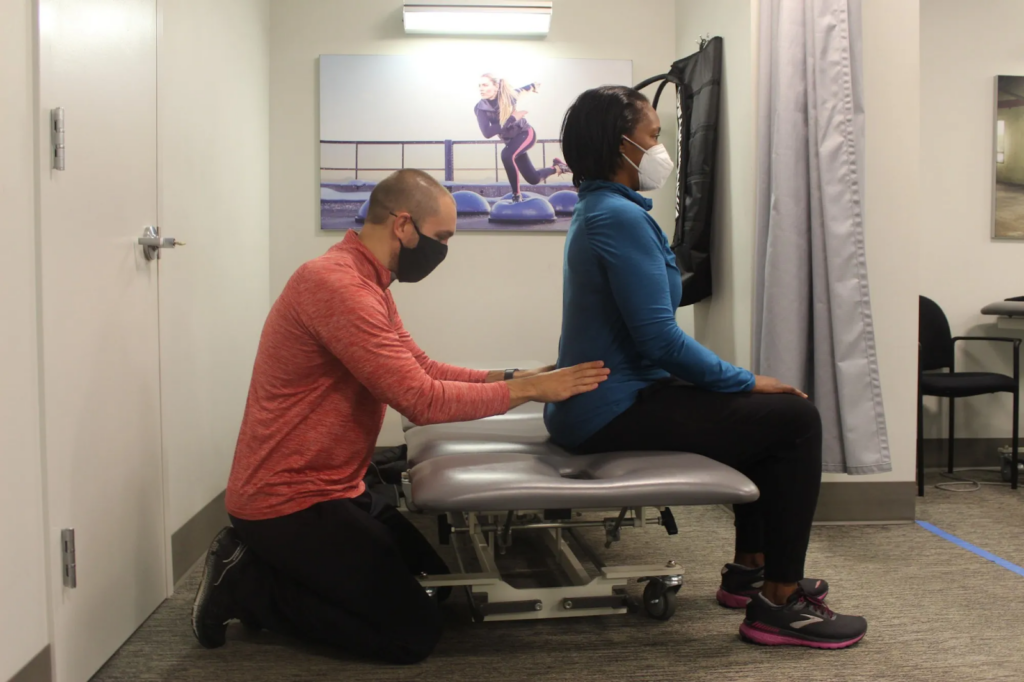
The right physical therapist can define your recovery and lifelong wellness level. He will be attentive to your concerns, be friendly and courteous, and perform any modern method. Apart from that, this handbook responds to the most common concerns of physical therapy patrons on how to select a physical therapist and provides a summary of the needed criteria. Beginning with the initial therapy session, you can guarantee yourself a fruitful and encouraging physical therapy session by making appropriate decisions.
What qualifications should a physical therapist have?
A licensed physical therapist is a person holding a DPT degree and extended clinical training. Beyond basic licensure, specialized certifications further demonstrate one’s expertise in the treatment of specific conditions or in working with particular patient populations, including athletes or those with neurological disorders.
This checking of qualifications ensures that the therapist is indeed able and knowledgeable. Equally important, in your selection of the right professional, is to inquire about their experience with your specific condition or injury. A comparison chart of the qualifications of different types of therapists could be helpful.
How do I confirm a physical therapist's experience?
You may first ask your physical therapist how long they have practiced the profession and if they have experience in handling conditions similar to yours. You may even ask about the success stories of their patients, which basically will be proof that they can handle the case.
Reviews on Google or other health sites and recommendations from friends or doctors will make you understand better how effective they are. The other ability that may show the experience of the therapist is the ability to explain treatment and answer questions. This may, furthermore, be emphasized using a bar chart comparing years of experience for the various therapists.

How important is a review to you when choosing a physical therapist?
Online reviews are important as they provide a history of professionalism, communication, and success rate about the therapist. Positive reviews may point to specific strengths: for example, attentiveness, and expertise in certain areas, which could imply possible weaknesses.
It is, therefore, very important to go through several reviews in order to get a balanced feel. Some reviews may include in-depth experiences of other patients who have similar conditions to yours, and this will reassure you that your choice of a therapist will be right.
Word-of-mouth recommendations bear no less significance when it refers to one’s good reputation as a therapist. The timeline graph showing the positive-negative reviews for different therapists would serve as a basis for decision-making.
How will I know if the approach of the therapist is suitable for me?
Conform the therapist’s approach to your needs: discuss treatment plans and philosophy with them. You would want to ask how they develop personalized plans, considering your particular condition, activity level, and goals.
Some therapists may emphasize exercises more than others do; others may use hands-on approaches, including manual therapy or mechanical techniques, with specialized equipment. And importantly, your involvement in the process of recovery should be of concern.
A good therapist will clearly communicate and involve you directly, ensuring you are always kept informed about what is going on and how you are doing. It would also be constructive to develop a table on the differences in the approach to manual therapy, exercise-based approach, etc.
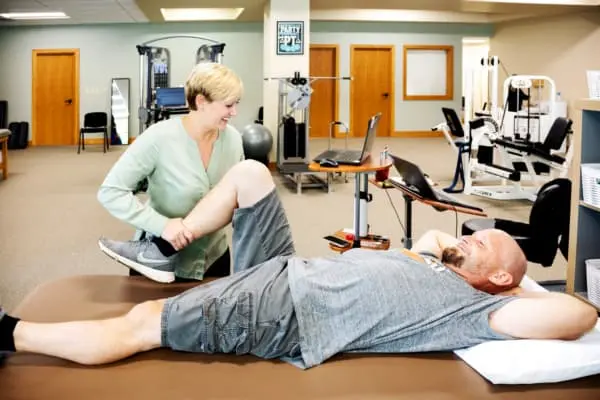
What can I expect from my first physical therapy visit?
This first session is used to establish one’s strength, range of motion, and any pain one may have. The therapist will also ask questions regarding your medical history, past injuries, and current symptoms to get an overall picture of you.
From here, they will develop a specific treatment plan for you, explaining what all will be done and approximately how long it may take to reach your goals. They will also explain what exercises or manipulations will be carried out and may begin some treatment to start relieving any distress.
Knowledge of what happens in the session creates expectations and allows an appropriate recovery process to occur. At this point, a flow diagram of the stages of the maiden session would come in handy.
How Often Should I Visit A Physical Therapist?
The frequency of a visit is selected based on the seriousness of your condition, the kind of therapy to be used, and the time factor that your doctor would want you to spend with the therapist. Based on the initial assessment, the therapist might suggest you come once or up to three times a week to begin treatment.
They will adjust the frequency according to how fast one is improving, and as one gets better, the visits can be less frequent since more is expected to be done at home. It is important to follow the recommended schedule for optimal results. A line graph showing the frequencies of recommended visits against different conditions could help illustrate this aspect.
Wrapping Up!
More than credentials are needed when choosing a physical therapy professional; experiences, approaches, and relating to specific needs must be understood. With the ability to ask the right questions, check reviews, and ensure specializations for your condition, you would be best positioned to make a decision that optimizes your recovery. Ultimately, finding that therapist who understands your goals and can give personalized care will enhance your journey in physical therapy and ensure better results.
Physical Therapy
Physical therapy (PT) is a key component in the healthcare industry that focuses on improving the physical function and mobility of patients while taking care of their pain, avoiding impairment, and promoting general fitness and health.

Sometimes, physical therapy is misconceived to prevent people from getting the right treatment. For any person looking to treat or recover from injury, chronic pain, or general wellness using physical therapy, it is important to straighten out these common misunderstandings regarding it.
Let’s take a look at some common misconceptions people have in coming to physical therapy; first is the idea that only injured people need the therapy; second, that the processes will be painful. We try to enlighten you with the truth as we feel it’s necessary so that you can make the right decisions on your behalf for better health.
Is physical therapy just for people who have injuries?
No, physical therapy does not relate only to injuries but also to mobility, chronic pain, and physical enhancement. Besides treatment and recovery, their role also includes prevention of injury, support of function, and management of various diseases like arthritis, stroke, or rehabilitation after surgeries.
Moreover, many would use physical therapy as a proactive way to optimize the capability of the body and reduce the chance of getting injured. In relation to these broader aspects, physical therapy tackles the restoration of physical health from every perspective. In situ: a typology of the diseases curable by physical therapy.
Is physical therapy always painful?
No, physical therapy should not be a source of pain. Therapists always adjust treatments according to each person’s level of tolerance and needs. There could be discomfort in some exercises as these exercises are designed to stretch tight muscles or mobilize stiff joints. That too is under control.
For this reason, the intensity of treatment is always varied in such a manner that it may be effective but not necessarily painful. Other ways of soothing the damage are through massage techniques, heat therapy, and selected exercises that reduce the pain during the very process.
However, over time, patients become less painful as the body alters and heals. A graph comparing pain before and after therapy would make things clearer.
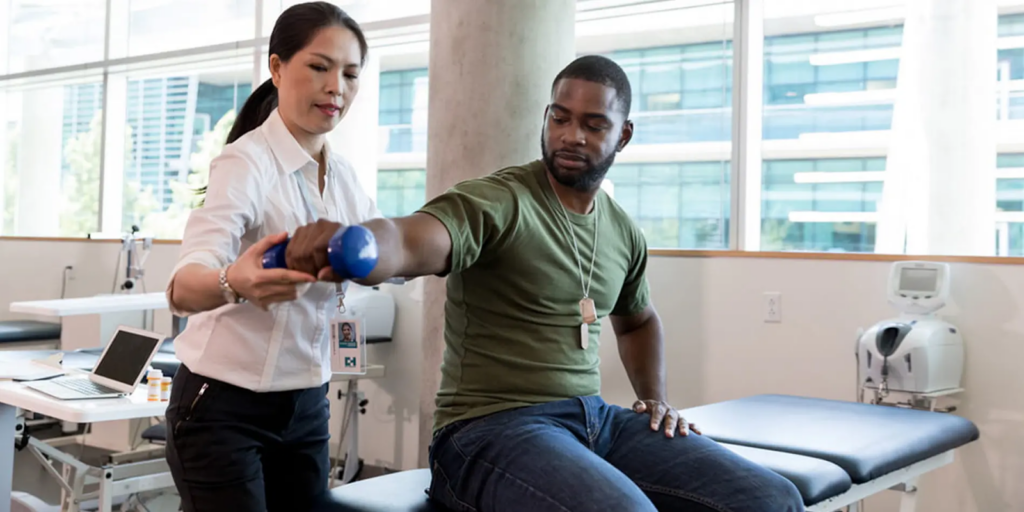
Can physical therapy take the place of surgery?
Yes, in some cases, physical therapy can often be a good alternative, particularly with back pain, knee problems, and certain conditions affecting joints. This is where strengthening muscles and improving the flexibility of joints can actually help take pressure off and reduce, if not eliminate, pain by nonsurgical means.
Many people enjoy improved lives with regular sessions of therapy, without ever having to resort to surgery. But it’s ultimately a personal decision based on medical counsel and the severity of the condition. A chart comparing the results of surgery and physical therapy could be enlightening.
Do you need a doctor's referral for physical therapy?
Most states have direct access laws in place, whereby an individual can seek care without a physician referral or prescription, though those requirements do differ from state to state.
This gives the patients timely access to care needed and does not have to await it because of referral processes. Of course, always are gray areas with respect to local laws and insurance requirements.
It is always best practice to consult your doctor or health insurance provider regarding what works in terms of direct access to physical therapy services.
Is physical therapy designated for older adults only?
No, people of all age groups avail the services of a physical therapist. They help kids resolve their developmental issues, athletes for performance enhancement, and grown-ups after injuries and surgeries. Therapists develop age-specific plans for the individual.
The program is individualized to each person’s needs, and may be geared toward different age groups. This physical therapy can range from teaching an elderly how to balance him or herself on the feet or directing others that are younger to continued mobility. This could, for example, fall under a pie diagram that represents the age groups of people receiving physical therapy.
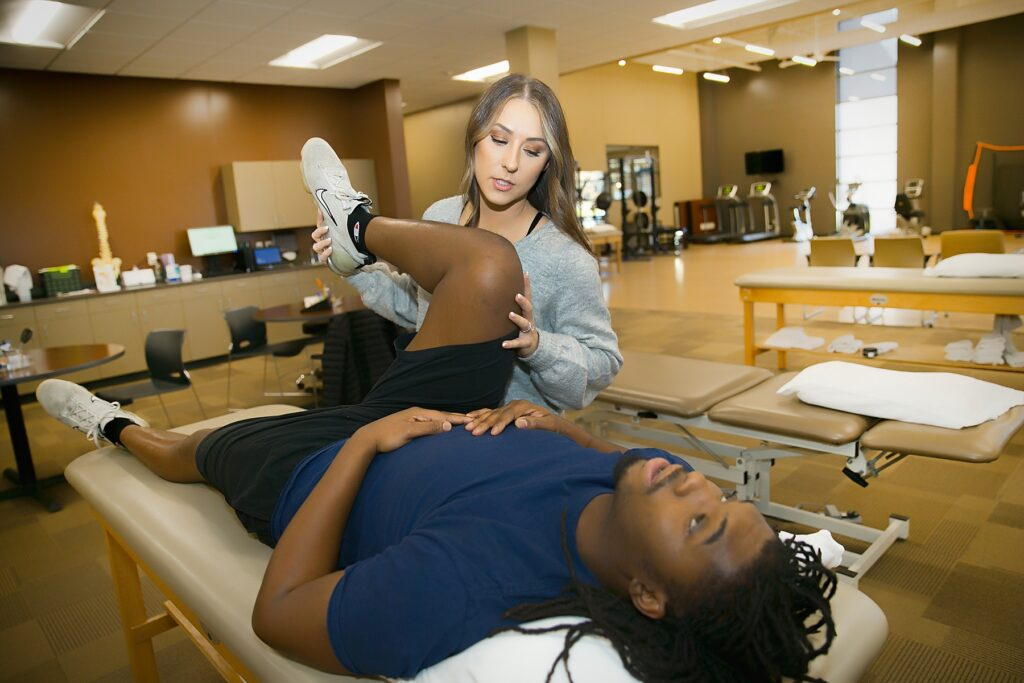
Does physical therapy involve only exercises?
No, it is all about various techniques other than exercises that may involve manual therapies, ultrasound, heat treatments, and electrical stimulation. The therapist should be able to adjust his approach towards a specific need.
It could be manual techniques, such as manipulating joints and soft tissues; ultrasound to reduce inflammation; or electrical stimulation to enhance the recovery process of muscles. These complement each other in ensuring a comprehensive treatment plan is given for addressing the causes of discomfort and helping patients regain strength and mobility.
Is it possible to pursue physical therapy at home?
Yes, many physical therapy exercises can be done from home. Many physical therapists prescribe specific home exercise programs for their patients to supplement the in-clinic work and continue the progress consistently.
These exercises are specifically aimed at consolidating what is gained within the therapy sessions, as the patients build strength, improve on flexibility, and maintain mobility. Home programs are a significant ingredient in long-term recovery and generally involve stretching strength-enhancing exercises, and mobility exercises.
Regular follow-through with the therapist will help to ensure that the program is correctly followed and modified as necessary.
In Conclusion
Myths associated with physical therapy are debunked, thus allowing one to make an informed decision for health choices. Physical therapy covers a wide array of treatment plans for various conditions other than injuries; all are effective regardless of age. Sometimes, it’s used instead of surgery, and many techniques are pain-free. If you’re thinking of physical therapy, consult a licensed therapist so that he/she can provide an individualized treatment plan suitable for you. Knowledge of facts guarantees better long-term health outcomes.
Physical Therapy
Physical therapy (PT) is a key component in the healthcare industry that focuses on improving the physical function and mobility of patients while taking care of their pain, avoiding impairment, and promoting general fitness and health.

Physiotherapy has been considered an effective technique ever since it was first practiced to treat a number of conditions including, but not limited to, rehabilitation – injury recovery, and pain treatment. It performs various biomechanical and other physiological functions, which help to improve mobility and reduce pain, as well as enhance overall health. This guide goes further into what factors may influence the current practice of physical therapy and why this evidence-based practice is important to patients. These insights help synthesize why physical therapy is still valued and practiced.
What does research say about physical therapy for chronic pain?
Moderate physical activities are often the treatment of choice in chronic pain syndrome. This is well done through physical therapy which relieves the chronic pain through intermediate stress on some particular joints and moderate exercise that improves mobility.
It has been established in various studies that pain management for most chronic pain diseases such as back pain, fibromyalgia, or arthritis includes the use of physical therapy modalities. Such exercises are focused on flexibility training for the spine and muscle strength and posture maintenance, thus in the long run it helps in decreasing the level of pain.
Patients who are adherent to physical therapy are noted to fare far better than those who opt not to do any exercises apart from medication. This is because the therapy is individualized making it possible to eliminate the root causes of pain.
Can physical therapy improve recovery after surgery according to research?
Yes, the use of physical therapy is justified for the encouragement of postoperative rehabilitation. Its significance lies in restoring mobility and strength after disease/surgery as well as preventing complications associated with postoperative stiffness or muscle weakness.
There has been considerable evidence reviewed concerning the effectiveness of physical therapy in treating patients after surgical care, especially for surgeries on hard tissues which include the knee or hip replacement. Exercises like physical therapy help to restore joint motion, muscle power, and even the ability to move about.

According to scientific studies, how does physical therapy help with stroke recovery?
Research suggests that physical therapy is critical in helping stroke patients recover. It helps recover movement, better coordination, improve balance as well as increase range of motion, thus facilitating rehabilitation in the long term.
The research was, however, motivated by the effects of physical therapist interventions on improving physical health or the functional independence of stroke survivors. Such patients often experience muscle weakness and even paralysis, coupled with poor coordination. One of the objective measures used is functional mobility and balance which is achieved through physical therapy through relearning of the lost skills and regaining of mobility.
Mobility recovery is enhanced for patients who take regular physical therapy sessions post-stroke and they achieve their independence much faster. Particularly, clinical therapy increases the end level of brain plasticity for the patient which is important for rehabilitation in the long run and helps to avoid additional complications.
Is there any evidence that physical therapy is effective in improving mobility in older adults?
Yes, the studies have found evidence of physical therapy effectiveness in the elderly population regarding mobility improvement. It also exercises physical therapy on balance, strength, and flexibility to decrease the chance of falling and encourage self-sufficiency.
Younger adults cannot begin treatment soon, as long as sports rehabilitation is still an underfunded area today. Apart from that, exposure to the repercussions of age and sports injury conservation containment approach: arms, legs, shoulders, knees, etc., cannot be adequate.
What does the available literature suggest about the efficacy of physical rehabilitation in case of sports injuries?
The research has shown that physical therapy as a form of rehabilitation after a sports injury is very fast and effective. It helps regain strength, and flexibility, and avoid other injuries in the future.
Relevant literature focuses on the biomedical aspect of physical therapy, placing it in the centre of the process of treatment and rehabilitation after sustaining sports injuries. Muscles and joints that are painful, strained, sprained, or injured, or have undergone surgery, require rehabilitation to regain balance and coordination.
Studies also suggest that an injury will be less recurrent since indoor electrotherapy, ultrasound and other modalities improve prosthetic fitting procedures and caution directs towards fixing existing muscle-couplings imbalances.

Does physical therapy aid in the treatment of any neurological disorders based on research evidence?
Of course, it does, as the studies state, with the case of persons with some neurological troubles, for instance, multiple sclerosis and Parkinson’s the physical therapy improves the range of movement, body strength and coordination.
Physical rehabilitation is well known regarding the beneficial functions it has on some neurological diseases such as multiple sclerosis (MS), on health related to that, furthermore on cerebral paralysis or its better-stated name, cerebral palsy. Research shows that restoring mobility, enhancing strength and ameliorating coordination help regressive nature of these ailments while conserving the wonted physical dimension.
In these cases, people, with MS or Parkinson’s disease are said to benefit from undergoing physical therapy on a regular basis since they can walk, experience less spasms of their muscles and live life fully. Moreover, therapy also helps these people rehabilitate such areas where they have weakness from the neurological disorders so that they live independently.
What does research say about the benefits of physical therapy for arthritis?
Physical therapy proves to be beneficial in the management of arthritis. Pain is minimized, joint movement is improved, and a person’s life activities are restored by specific exercises aimed at enhancing the patient’s arms and legs range of motion.
Physical therapy treatment has been found effective in combating arthritis, with osteoarthritis and rheumatoid arthritis being the most affected groups. The therapy aims at strengthening the muscles surrounding the painful joints, improving the range of motion and easing the swelling and pain.
Studies emphasize that patients suffering from joint pain who go through physical therapy have reduced pain and a better range of activities than before. The key feature of physical therapy is that it retains joint efficiency by using physical training that does not stress the joints thereby slowing the progress of arthritis which in return helps in improving the quality.
Conclusion:
A number of studies have shown the effectiveness of physical therapy as a rehabilitative and corrective means for the treatment of numerous health problems. There is plenty of evidence that physical therapy contributes to better health, increased range of motion, and lower pain levels. Suffering patients should bear this in mind while seeking a treatment plan for other forms of diseases in addition to these specific conditions in order to have the right modes of therapy suitable for their ailment.
